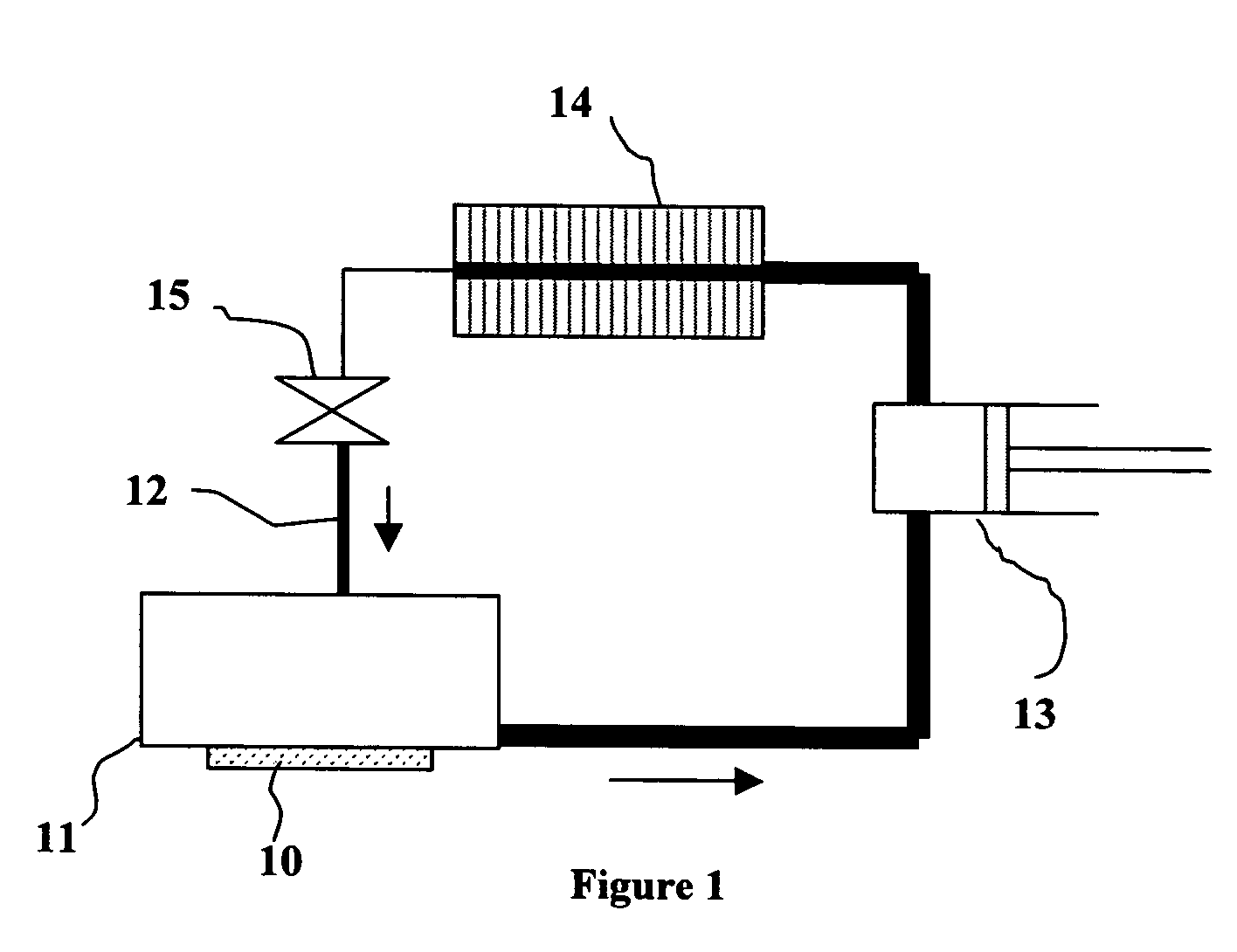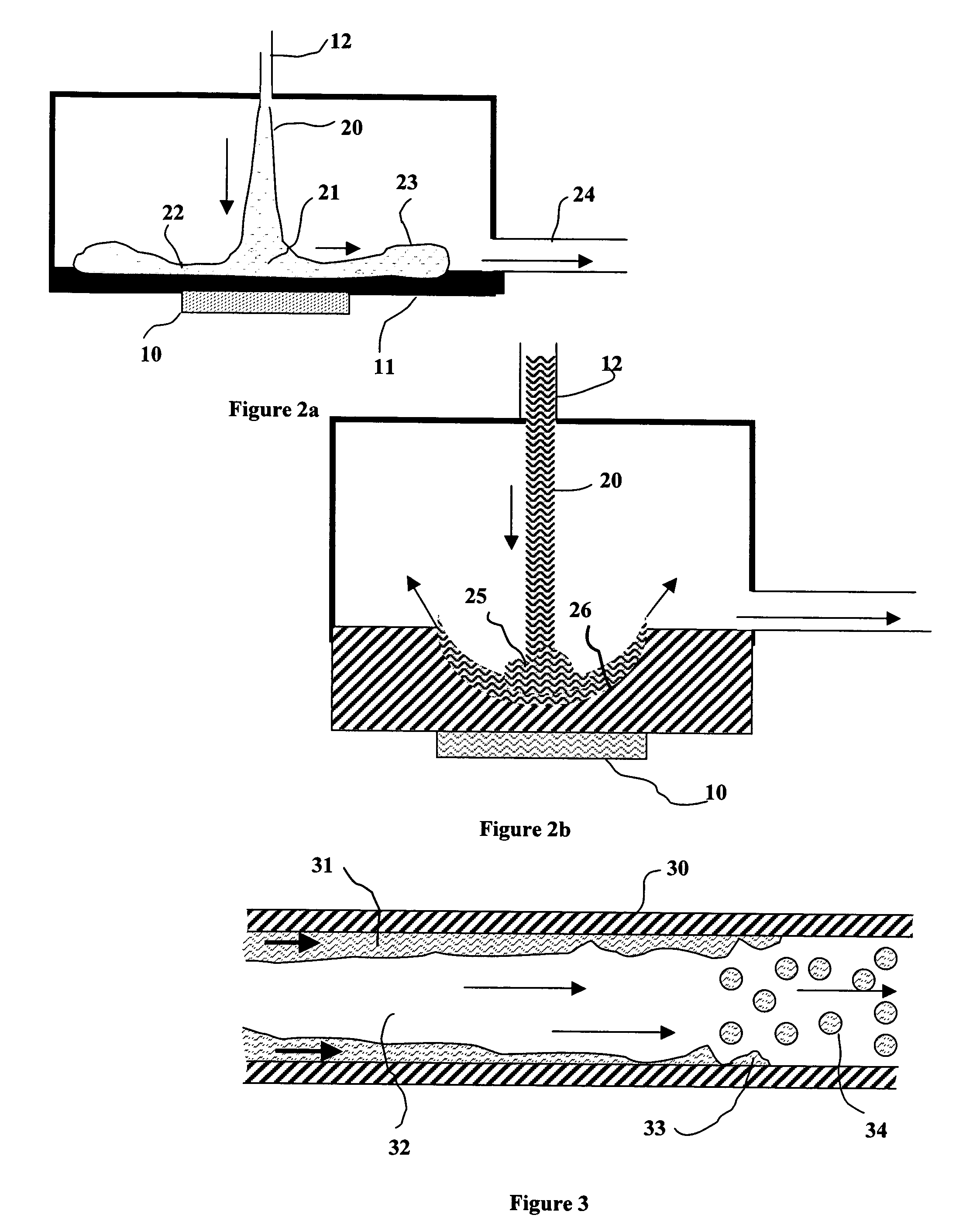Cooling electronics via two-phase tangential jet impingement in a semi-toroidal channel
a technology of semi-toroidal channel and tangential jet, which is applied in the direction of indirect heat exchangers, lighting and heating apparatus, domestic cooling apparatus, etc., can solve the problems of limiting the practical approach in most cases to boiling heat transfer, poor choice of air for any type of circulation, and inability to consider the use of refrigerant for high flux needs. , to achieve the effect of increasing the heat flux removal ra
- Summary
- Abstract
- Description
- Claims
- Application Information
AI Technical Summary
Benefits of technology
Problems solved by technology
Method used
Image
Examples
Embodiment Construction
[0035] The present invention is designed to use a two-phase cooling fluid to remove high heat flux from electronics systems over a surface area that is relatively large compared with state-of-art cooling systems. Electronic system designers are now seeking cooling system for thermal fluxes greater than 1 kW / cm2 over areas of tens of square centimeters. Thermal research shows the highest heat removal rate is achieved by a two-phase fluid system wherein heat dissipating devices mounted on a conductive plate evaporate a liquid directed against the opposite side of the plate. The highest flux rates are achieved with water. However, in some cases, e.g., when the system must be dormant in freezing temperatures, it is necessary to use a volatile fluid referred to as a refrigerant (although the operating temperature of the system may be above that normally thought of as refrigeration).
[0036]FIG. 1 is a schematic of a conventional refrigeration cycle as shown in textbooks on thermodynamics....
PUM
 Login to View More
Login to View More Abstract
Description
Claims
Application Information
 Login to View More
Login to View More - R&D
- Intellectual Property
- Life Sciences
- Materials
- Tech Scout
- Unparalleled Data Quality
- Higher Quality Content
- 60% Fewer Hallucinations
Browse by: Latest US Patents, China's latest patents, Technical Efficacy Thesaurus, Application Domain, Technology Topic, Popular Technical Reports.
© 2025 PatSnap. All rights reserved.Legal|Privacy policy|Modern Slavery Act Transparency Statement|Sitemap|About US| Contact US: help@patsnap.com



